Ducati Introduces The Next-Generation V2 Engine

Ducati’s lightest V-Twin ever solidifies Bologna’s commitment to the iconic engine
In what shouldn’t be as much of a surprise as it is, Ducati has announced the next generation of its iconic V-Twin engine, proving pundits like myself absolutely wrong about the V2 engine going away in favor of the parallel-Twin that is becoming ubiquitous. The reality was the Panigale V2 Final Edition marked the end of the Superquadro engine – and that’s it.
There’s no way Ducati would abandon the engine configuration that brought the company 400 race victories and 1,000 podiums in production-based racing alone. In fact, Ducati is honoring that commitment to innovation by producing its lightest V-Twin engine at just 120 lbs.
Engine Details
Ducati’s latest V2 sports a displacement of “just” 890cc. It’s a reduction from the Superquadro’s 955cc, but it’s still a highly oversquare engine with a 96.0 mm bore and 61.5 mm stroke (the Superquadro was 100.0 mm x 60.8 mm for comparison). Oversquare engines like to rev, and this new V2 is no different, reaching a redline of 11,350 rpm. With its high revs and a 13.5:1 compression ratio (up one point from the Superquadro), Ducati claims a peak of 120 hp at 10,750 rpm and 69 lb-ft of torque at 8,250.
It’s unclear why Ducati shrunk the engine capacity, especially as Bologna’s rivals at KTM have upped its parallel-Twin to 990cc, but at least it’s in line with Yamaha’s 890cc CP3 Triple. Interestingly, all three engines are rated to nearly identical power figures. Unlike the Desmodue, Desmoquattro, Testastretta, and Superquadro engines before it, this new V2 doesn’t have a name. Nor does it have Ducati’s signature desmodromic valve actuation. Ducati says those past V2s were too focused on racing, which meant those engines didn’t have much practicality for the road.
This new V2 turns the page. Performance is always a pillar for Ducati, but in this new V2, the definition of performance goes beyond high-strung horsepower. It now has to also include compactness, light weight, smoothness, fuel efficiency, and most importantly – wide versatility. All while meeting Euro5+ emission regulations. It’s a no-brainer to expect this engine in a new Panigale, Streetfighter, and Multistrada, at least. Who knows what else might be in store?
For starters, Ducati hasn’t totally abandoned its history. The V-angle remains 90 degrees with the cylinders rotated backwards on the crankshaft axis by 20 degrees. This helps optimize weight balance, reduces overall wheelbase, and also provides much-needed clearance for the front tire when the fork is fully compressed. Inside the die-cast crankcases, water jackets are incorporated around the thin-walled aluminum cylinder liners for effective and efficient heat dissipation. Since the liner is inserted into the crankcase housing during the initial assembly process, Ducati says this allows the head to be fixed directly onto the crankcase for optimal stiffness and compactness.
Hello, Valve Springs
You read that right, the V2 follows in the footsteps of the V4 Granturismo and uses valve springs instead of the desmo system. This makes the ownership experience a little easier by not having to worry about desmo services and extends the length of valve clearance checks to 18,000 miles – 3,000 miles more than the Superquadro engine. Like other variable valve timing systems, Ducati’s IVT (Intake Variable Timing) system gives you the best of both worlds with linear torque delivery at low revs without tapering off at high revs. This is because the IVT system continuously varies the timing of the intake valve control over a 52° arc. Cam phasers fitted on the intake camshafts define the best overlap based on engine rotation speed and throttle opening. Because of the IVT, more than 70% of maximum torque is available at 3,000 rpm, and between 3,500 and 11,000 rpm, the torque value never drops below 80%.
The intake valve opening finger rockers have DLC (Diamond-Like Carbon) treatment, just like the Desmosedici MotoGP bike, to reduce friction as much as possible. In the interest of keeping things light, and to help support the high revs, the intake valve stems are hollow, which brings a 5% weight saving. The valves are chrome-plated.
Sucking air into the engine is a 52 mm diameter circular throttle body, with a sub-throttle injector controlled by a ride-by-wire system. This enables four different Power Modes. These dedicated maps change the amount of torque delivered per gear. The new V2 is equipped with an intake bypass circuit which uses a duct to connect the two cylinders' airbox and intake ducts near the intake valve, improving the air/fuel mix for greater fuel efficiency and to reduce emissions.
In keeping with the theme of compactness, the new V2 has the water pump positioned on the right of the front cylinder head and is driven via a pair of gears on the exhaust cam. This minimizes the exposed rubber tubing to the radiator, and in Ducati’s words, improves “the appearance of bikes where the engine is left exposed.” That sounds directed at both the Streetfighter and Multistrada models this engine will go into. For the same reasons, the new engine has its water/oil heat exchanger positioned inside the V of the cylinders, which allows for the elimination of the oil cooler.
Unsurprisingly, the V2 gearbox is equipped with Ducati Quick Shift (DQS) 2.0 that is based solely on the gear sensor, allowing for a more direct feel, with reduced travel and without that “rubbery” sensation typical of traditional quick shifters. Not to mention it should be easier to find neutral. Finally, the 8-disc slipper clutch is derived from the Testastretta 11°.
Ducati says the new V2 will be specialized for the different applications it will be used in, “from sportbikes, to adventure travel bikes, and everyday road bikes,” and will have different power levels, gearing, flywheel inertia, and alternator output to match. You can deduce from there the different models we’ll see this engine in.
In fact, the wait won’t be long, as Ducati is set to reveal the first bikes to feature the new V2 engine in the Ducati World Premiere set for Tuesday, November 5 at 6:00pm CET.
Main technical data of the V2
- 890 cc 90° V-twin engine
- Weight 120 lbs (-21.7 lbs vs. Superquadro 955, -13 lbs vs. Testastretta Evoluzione, -12.7 lbs vs. Desmodue Scrambler)
- Chain-driven distribution with double overhead camshaft, IVT variable valve timing on the intake, 4 valves per cylinder. 38.2 mm hollow-stem intake valves, 30.5 mm exhaust valves.
- Bore x stroke 96 x 61.5 mm
- Compression ratio 13.1:1
- Maximum power 120 hp at 10,750 rpm – 126 hp with racing exhaust and maximum torque 69 lb-ft at 8,250 rpm
- Aluminum cylinder liner
- Euro 5+ homologation
- Multi-disc wet clutch, servo-assisted and with anti-hopping function
- Semi-dry sump lubrication with pressure pump and scavenge pump
- Power feed with 52 mm diameter throttle body
- Six-speed gearbox with the option of fitting the Ducati Quick Shift (DQS) 3.0
- Oil change scheduled at 9,000 mi
- Check and eventual valve clearance adjustment scheduled at 18,000 mi
- CO² emissions (WMTC): 120 g/km
Ducati's New V2 Engine Gallery
Become a Motorcycle.com insider. Get the latest motorcycle news first by subscribing to our newsletter here.

Troy's been riding motorcycles and writing about them since 2006, getting his start at Rider Magazine. From there, he moved to Sport Rider Magazine before finally landing at Motorcycle.com in 2011. A lifelong gearhead who didn't fully immerse himself in motorcycles until his teenage years, Troy's interests have always been in technology, performance, and going fast. Naturally, racing was the perfect avenue to combine all three. Troy has been racing nearly as long as he's been riding and has competed at the AMA national level. He's also won multiple club races throughout the country, culminating in a Utah Sport Bike Association championship in 2011. He has been invited as a guest instructor for the Yamaha Champions Riding School, and when he's not out riding, he's either wrenching on bikes or watching MotoGP.
More by Troy Siahaan












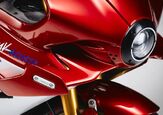
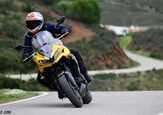
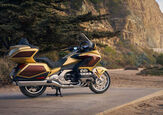
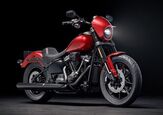

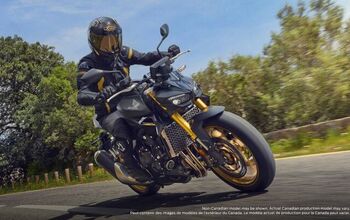

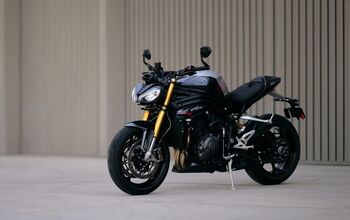

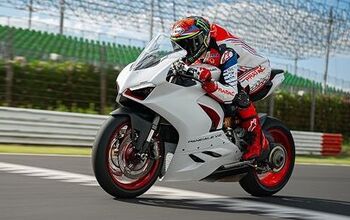
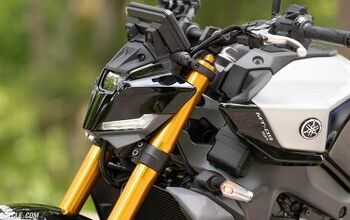





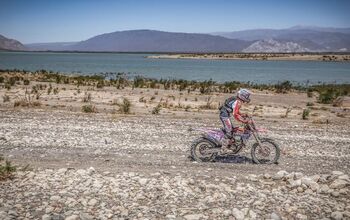
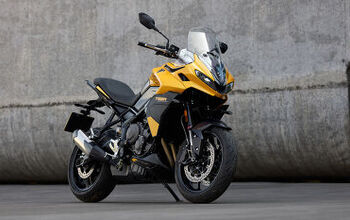




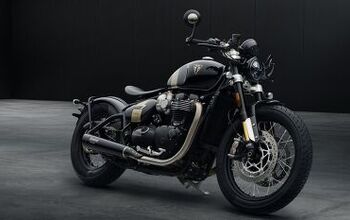
Comments
Join the conversation
Two points
Firstly, a joke, but Ducati has built a Suzuki engine.
Lastly, Elitists agenda met. Reduce ICE emissions and increase male sterility, check.
How did a 65cc reduction in displacement result in a loss of 35HP?
Doesn't seem like progress to me.